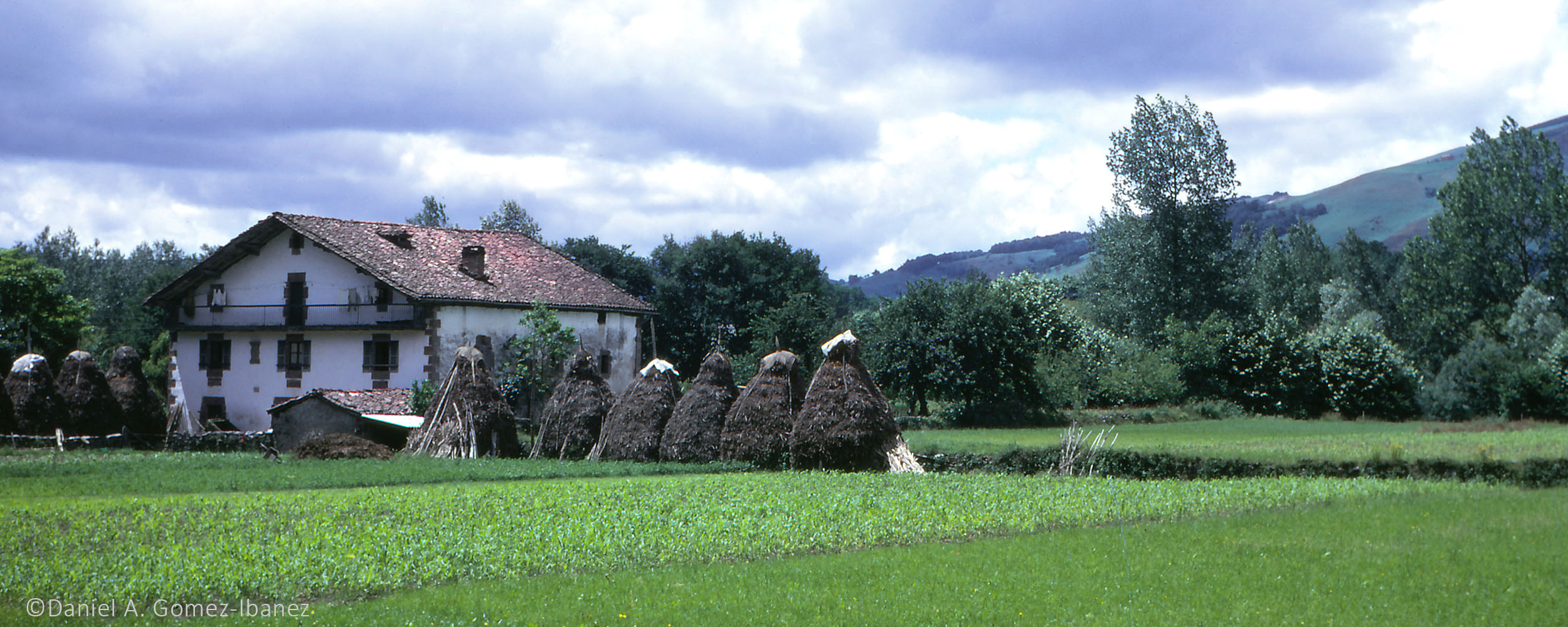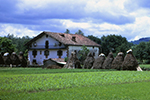

In the south of Europe the great mountain arcs enclosing the Mediterranean basin sweep westward to meet the Atlantic. Westernmost rise the Pyrenees, where the Iberian peninsula joins the rest of Europe. Near the Atlantic the high and jagged peaks of the central Pyrenees subside, become softer and more rounded. The climate here is softer also, warmer in winter and cooler in summer and with more rain than the mountains to the east.
This small corner of Europe -- the western Pyrenees of southwestern France and part of northern Spain -- is inhabited by Basque farmers and shepherds. The Basques still speak a distinctive and ancient language unrelated to any of its indo-european neighbors, and in these photographs, taken during the 1960s and 1970s, one can still find images of older and traditional ways of life and livelihood. I lived in the area while doing field work for my doctoral dissertation, eventually published by Oxford University Press as The Western Pyrenees. Unfortunately, very few photographs made it into the book.
Family, farm, and the valley communities are the centers of society in the mountains. Tourism may predominate today, but fifty years ago most families farmed. Crops (mostly maize for forage), kitchen gardens, and sheep and cattle were mainstays. Where adjacent valleys met along the crests, their high pastures also met, and since the middle ages the valley communities have entered into formal treaties with one another to ensure that these summer grazings would be shared peacefully and equitably. These local treaties even survived the creation of the modern nation-states of Spain and France in the seventeenth century, and they continue in force today. The pastoral customs and treaties mean that the international boundary here is riddled with exceptions to the usual notions of territorial sovereignty.
Because the high summer grazings, so essential to the pastoral life, are held in common by the whole valley, it is the valley, rather than the village or town, that people identify as their community. There are towns and villages in each valley, but all but the largest towns look more like a gathering of a few farms. Most farms sit by themselves, scattered among the folds and small basins of the valleys.
The Basque farm house, usually made of whitewashed sandstone with a red tile roof, is another anchor of Basque culture. Each house has a name, and it is the name of the house that traditionally identifies the family within. A man or woman has a legal surname that appears on a birth certificate and official documents, but neighbors know the family by the name of the house, which is likely to be different. Houses and farms stayed in the family: the whole property passing undivided to only one of the children (often in spite of legal prohibitions), and so the Basque farm remained relatively stable, without being sold or divided into smaller and smaller parcels with each generation.

 Basque Country: gallery
Basque Country: gallery